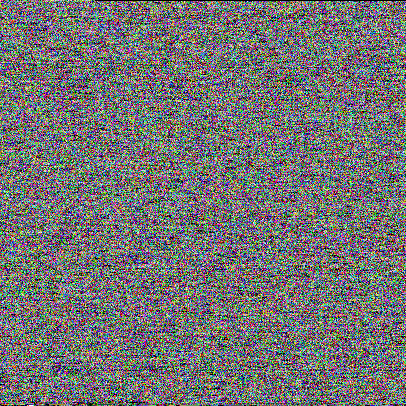Transform any file to BMP and back again

For example the file Ode to Joy looks like this
Doesn't everybody ask themselves how a file would look visualy? When I was looking through Wikipedia I saw how simple the BMP file format is and I thought to make a Python program to store the bytes from any file into a BMP (to be viewed) but to be able to reconstruct the original file.
After that I thought that this program can be useful for something: PIRACY! For example someone can transform an MP3 in multiple BMP files (of a smaller size, say 500KiB) and put them on his blag. Who wants the song can download the images and transform them back to the MP3. The idea to represent a file as something else reminds me of the illegal number.
The sourcecode is below, but you can also get it from file2bmp.py.
1 2 3 4 5 6 7 8 9 10 11 12 13 14 15 16 17 18 19 20 21 22 23 24 25 26 27 28 29 30 31 32 33 34 35 36 37 38 39 40 41 42 43 44 45 46 47 48 49 50 51 52 53 54 55 56 57 58 59 60 61 62 63 64 65 66 67 68 69 70 71 72 73 74 75 76 77 78 79 80 81 82 83 84 85 86 87 88 89 90 91 92 93 94 95 96 97 98 99 100 101 102 103 104 105 106 107 108 109 110 111 112 113 114 115 116 117 118 119 120 121 | #!/usr/bin/env python
# Name: file2bmp
# Author: Paul Nechifor <[email protected]>
# Started: 05.06.2009
# Updated: 07.07.2009
# Description: Transforms any file into a BMP and vice versa.
from math import *
import sys
def hput(bmp, s):
"""Writes 2 hex digits as a byte in the file"""
if len(s) % 3 == 1: print "bubu!"; exit(1)
for i in xrange(0, len(s), 3):
bmp.write(chr(int(s[i:i+2], 16)))
def intstr(n):
"""Transforms an int32 in the format needed by hput()"""
str = ""
for i in xrange(4):
str += "%02x " % (n & 255)
n >>= 8
return str
def memint(str):
"""Transforms a binary representation of an int32 to an number"""
n = 0
for i in xrange(4):
n = (n << 8) | ord(str[3-i])
return n
def makeBMP(filename):
"""Reads the file whose name is given in the parameter and writes the BMP file"""
file = open(filename).read()
good = len(file)
print "There are", good, "bytes."
if good % 3 == 1: file += chr(0)*2
elif good % 3 == 2: file += chr(0)
pixeli = len(file) / 3
print "That means", pixeli, "pixels."
xy = int(ceil(sqrt(pixeli)))
print "Making a", xy, "by", xy, "image."
rest = xy*xy - pixeli
print "Adding", rest, "pixels to make it a", xy*xy, "- pixel image."
file += chr(0) * (rest*3)
print "There are now %d bytes for %d pixels." % (len(file), xy*xy)
mod = (xy * 3) % 4
if mod != 0: pad = 4 - mod
else: pad = 0
print "Adding a padding of %d bytes so that the %d-pixel line will be %d bytes long." % (pad, xy, xy*3 + pad)
new = ""
for i in xrange(0, len(file), xy*3):
new += file[i:i + xy*3] + chr(0)*pad
file = new
data = len(file)
print "Now there are %d bytes." % (data)
header = 54
total = header + data
print "The image will be %d bytes long." % (total)
f = open(filename+".bmp", "w")
hput(f, "42 4D") # Magic number ("BM")
hput(f, intstr(total)) # Size of the BMP file
#hput(f, "00 00") # Application Specific
#hput(f, "00 00") # Application Specific
# here i'll put how may bytes are good
hput(f, intstr(good))
hput(f, "36 00 00 00") # The offset where the bitmap data (pixels) can be found.
hput(f, "28 00 00 00") # The number of bytes in the header (from this point).
hput(f, intstr(xy)) # The width of the bitmap in pixels
hput(f, intstr(xy)) # The height of the bitmap in pixels
hput(f, "01 00") # Number of color planes being used.
hput(f, "18 00") # The number of bits/pixel.
hput(f, "00 00 00 00") # No compression used
hput(f, intstr(data)) # The size of the raw BMP data (after this header)
hput(f, "13 0B 00 00") # The horizontal resolution of the image
hput(f, "13 0B 00 00") # The vertical resolution of the image
hput(f, "00 00 00 00") # Number of colors in the palette
hput(f, "00 00 00 00") # Means all colors are important
f.write(file)
f.close()
def getFromBMP(input, original):
file = open(input).read()
xy = memint(file[18:24])
print "The image size is %dx%d." % (xy, xy)
line = xy * 3
print "A line is %d bytes long." % (line)
padding = int(ceil(line / 4.0) * 4 - line)
print "This means %d bytes are padding bytes." % (padding)
good = memint(file[6:10])
print "There are %d good bytes after the padding is removed" % (good)
file = file[54:] # removing the header
new = ""
for i in xrange(0, len(file), line + padding):
new += file[i:i+line]
f = open(original, "w")
f.write(new[:good]) # writing only the good bytes
f.close()
if len(sys.argv) < 3:
print "Usage: file2bmp.py to file.txt - creates file.txt.bmp\n" + \
" file2bmp.py from file.txt.bmp - recreates file.txt"
else:
if sys.argv[1] == "to":
makeBMP(sys.argv[2])
elif sys.argv[1] == "from":
out = sys.argv[2]
if out[-4:].lower() == ".bmp": out = out[:-4]
else: out = out + "_from"
getFromBMP(sys.argv[2], out)
else:
print "Must be 'to' or 'from'"
|